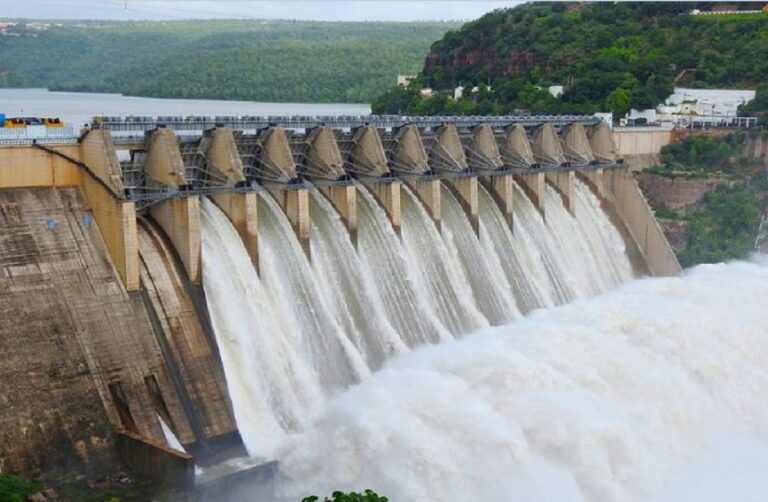
Nepal energy tech boom, In the 21st century, geopolitics is no longer characterized exclusively by regional debate or customary control battles. Instep, the race for dominance rotates around three basic fields: get to to basic minerals and semiconductors, the advancement of computational capacities, and the capacity to meet the taking off worldwide request for vitality and storage.
While much of the highlight is on countries with cutting-edge innovation or endless mineral saves, Nepal—a nation regularly related with its hilly landscape and hydropower potential—has an opportunity to rethink its part in this worldwide contest.
According to a ponder by the Worldwide Middle for Coordinates Mountain Advancement (ICIMOD), Nepal’s hypothetical hydropower potential is evaluated at 83,000 MW, with around 42,000 MW being financially doable. This positions Nepal as a key player in tending to the region’s developing vitality requests whereas adjusting with worldwide supportability goals.
The worldwide vitality race has advanced. It is no longer fair approximately creating power—solar boards and wind turbines have made renewable vitality copious. The genuine challenge lies in putting away and using this vitality proficiently. Agreeing to a report by the Worldwide Renewable Vitality Organization (IRENA), worldwide power capacity capacity needs to develop at slightest 40-fold by 2050 to bolster the vitality move, underscoring the basic require for inventive capacity arrangements like hydropower stores and pumped capacity systems.
Nepal, with its gigantic hydropower potential, sits at a one of a kind junction, able of giving not fair clean vitality but moreover vitality capacity arrangements associated to battery ranches or photovoltaic cells. At the same time, Nepal’s geographic position and renewable assets offer an uncommon opportunity to control the computational future—turning vitality into information at the source.(Nepal energy tech boom) .
Critical minerals and semiconductors: The establishment of the race
As the dialog on vitality and geopolitics advances, the foundational part of basic minerals and semiconductors comes into sharp center. These fundamental materials support the move to cleaner vitality and progressed computational technologies.
The worldwide scramble for basic minerals such as lithium, cobalt, and uncommon soil components has gotten to be one of the characterizing highlights of present day geopolitics. These materials are the soul of semiconductors, batteries, renewable vitality advances, and progressed defense frameworks. Basic minerals are basic for making computational equipment, empowering high-performance computing, and fueling defense innovations like guided rocket frameworks, rambles, and radar equipment.
Securing these assets is not fair almost possession but guaranteeing a liquid and continuous supply chain. For occasion, if electric vehicles fueled by lithium-ion batteries are closely resembling to gasoline or diesel motors, at that point lithium and cobalt must be as omnipresent and effectively provided as fossil powers for this move to succeed.
China’s vital speculations in Africa embody this approach. Through activities such as the Belt and Street Activity (BRI), China has built up profound ties with African countries wealthy in basic minerals. Nations like the Law based Republic of Congo (DRC), which produces over 70 percent of the world’s cobalt, are central to these efforts.
China has contributed intensely in mining framework, securing get to to basic assets whereas making streamlined coordinations systems to transport crude materials to its fabricating center points. This comprehensive methodology guarantees a relentless stream of basic minerals required for creating batteries and semiconductors, underscoring the significance of a strong supply chain in ruling future industries.(Nepal energy tech boom) .
However, African countries have developed progressively vocal almost needing more than fair asset extraction. Having learned difficult lessons from a colonial past stamped by abuse, they presently look for esteem expansion inside their borders. Numerous African nations point to create businesses that can fabricate wrapped up products.
The Joined together States is moreover effectively competing for impact in Africa to secure get to to basic minerals. Through activities such as the Minerals Security Association (MSP) and speculations by means of the US Worldwide Advancement Back Enterprise, America looks for to balance China’s dominance by cultivating associations with African nations.
The semiconductor industry encourage outlines this energetic. These basic components, basic for everything from smartphones to AI frameworks, depend on uncommon soil components that are concentrated in a few districts universally. The continuous semiconductor deficiencies highlight the delicacy of supply chains and the geopolitical moves required to secure them. Nations and organizations are not fair competing for get to but too endeavoring to limit generation capabilities, lessening reliance on outside supply chains.
While Nepal does not have basic minerals like lithium or cobalt, its key significance lies downstream in the vitality supply chain. With inexhaustible hydropower assets, Nepal can play a pivotal part in controlling the businesses that depend on these minerals, such as battery generation, electric vehicles, and semiconductors.
By situating itself as a steady clean vitality supplier, Nepal can play a pivotal part in supporting the worldwide move toward maintainable advances. This vital part empowers Nepal to complement mineral-rich countries in supporting the worldwide shift.
Computational capacities: Energy-intensive growth
Building on the basic minerals dialog, the request for computational control includes another layer to the worldwide vitality race. Computational capacities are the motors driving cutting edge advances, making their advancement an energy-intensive priority.
Computational control alludes to the capacity of frameworks to handle information and execute complex calculations. Our world has been dematerialised in later decades. We no longer depend on physical cassettes to tune in to music; instep, we stream it. Motion pictures, once put away on DVDs, are presently accessible on request through online stages. Behind these consistent encounters lie endless server systems that store, prepare, and provide this substance to billions. Each melody gushed, motion picture observed, or archive gotten to contributes to the developing computational requests set on these servers.
As Vaclav Smil talks about in his book ‘Numbers Don’t Lie’, particularly in the chapter ‘The Rise of Data’, information capacity has experienced a momentous change over centuries. In antiquated Mesopotamia, information capacity was constrained to clay tablets, holding as it were a few hundred bytes of data. By the 5th century, libraries and compositions expanded this to roughly 10^5 bytes. Be that as it may, the Gutenberg printing press in the 15th century checked a seismic move, empowering information capacity and spread to grow exponentially. This move laid the establishment for the present day data age.
Related:







1 thought on “Nepal energy tech boom”